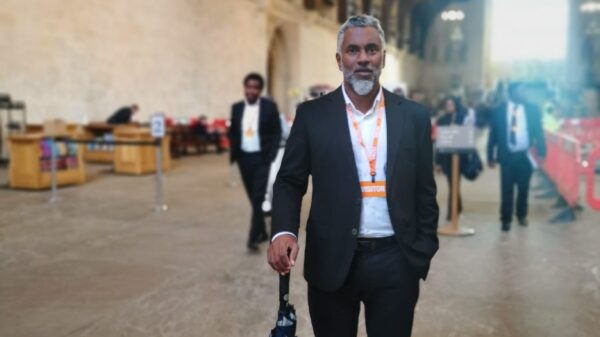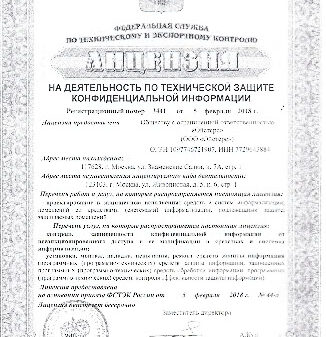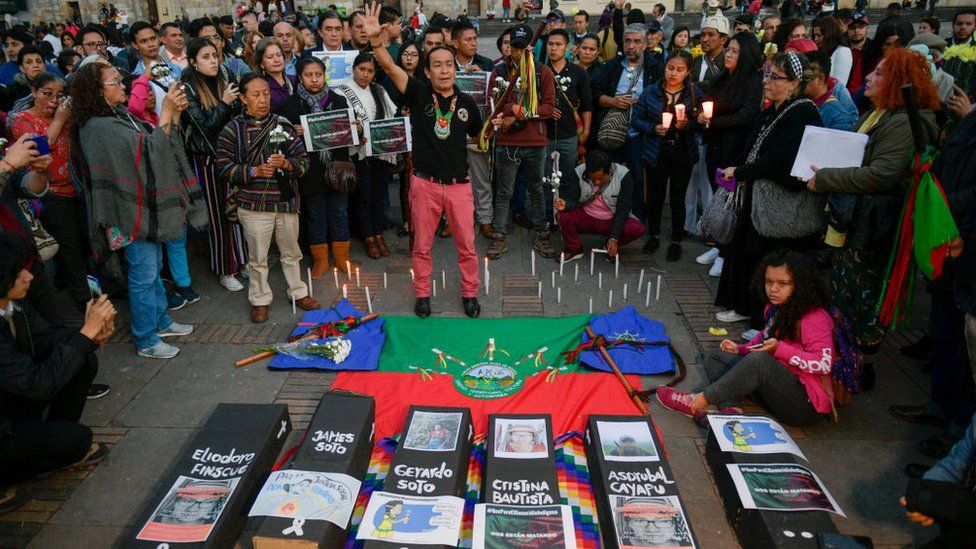Colombia reported the deaths of at least 145 community leaders and rights defenders last year, as fighting by armed gangs fuelled further violence.
Carlos Camargo, the human rights ombudsman, said the victims included indigenous leaders, trade unionists and representatives of rural communities.
Most of the killings were linked to illegal armed groups, he said, without naming the alleged perpetrators.
The country is one of the world’s most dangerous for activists, monitors say.
Colombia is officially at peace after signing a deal with the largest rebel group, the Revolutionary Armed Forces of Colombia (Farc), in 2016. But other armed gangs continue to operate in the country, the world’s largest cocaine producer.
Violence has increased in recent months due to disputes over territory and resources involving dissident Farc rebels and members of another Marxist guerrilla group – the National Liberation Army (ELN) – as well as right-wing paramilitary groups and criminal gangs such as the Gulf Clan.
Most of the killings happened in areas where drug traffickers operate, according to the ombudsman’s office, a government agency that oversees the protection of citizens’ human and civil rights.
- ON THE GROUND: The priests navigating Colombia’s conflict zones
- CONTEXT: Colombia warns gangs to surrender or be hunted down
Last year also saw anti-government protests being violently repressed by Colombian security forces, which were accused by human rights groups and protesters of using unnecessary force. More than 50 people died, the ombudsman said.
The number of activists killed last year was lower than in 2020, when the ombudsman’s office recorded 182 killings.

You may also find interesting:
This video can not be played
To play this video you need to enable JavaScript in your browser.


























